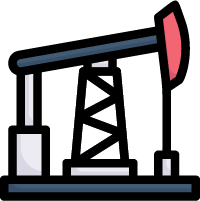Exploring New Heights: The Power of LiDAR in Topographic Mapping
What is LiDAR?
Aerial LiDAR employs a specialized sensor system mounted on our drones. This system emits laser pulses towards the ground, which bounce back after hitting objects. By calculating the precise time taken for the lasers to return, the system determines the exact distances between the drone and various surfaces on the ground. This data is then used to generate a comprehensive point cloud, which is a three-dimensional representation of the landscape's surface.
Differing from photogrammetry that solely captures object surfaces through an RGB camera, LiDAR utilizes laser light pulses capable of penetrating through foliage and other obstructions. This capability enables the acquisition of intricate details beyond what traditional methods offer, making it especially effective for capturing surfaces hidden by undergrowth, trees, and various vegetation types.
Industrial Applications
Advantages of Aerial LiDAR in Topography
Unmatched Precision: Aerial LiDAR produces highly accurate elevation data, crucial for applications like urban planning, forestry management, and flood risk assessment.
Rapid Data Collection: This technology accelerates data collection compared to traditional methods, saving time and resources.
Comprehensive Coverage: A single aerial LiDAR survey covers vast areas, providing detailed data for large-scale projects.
Detailed Terrain Analysis: Aerial LiDAR aids in identifying slopes, valleys, and other land features through the creation of detailed point clouds.
Environmental Management: Conservationists and ecologists benefit from point clouds to assess vegetation density and monitor habitat changes over time.
Infrastructure Planning: Urban planners use Aerial LiDAR point clouds to design infrastructure projects, considering elevation variations and obstacles.
The Texas Drone Difference
Our Drones, Exceptional Service - Your Data
On Staff, Reliable and FAA Certified Pilots
We go - so you don’t have to (Hard to Access Areas)
Ground Penetration through Foliage
Timely Deliverables in House
Expand your Team, Shrink your Expenses
We are eager to help you with your next project!
Reach out today and we’ll be happy to consult with you on your project. We can provide expert guidance on how to strategically use LiDAR and traditional aerial mapping to meet your requirements. Consultations are complimentary and will help you have a clear vision of how to proceed.









